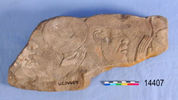| Homepage | Timeline | Maps | A-Z index | Learning |
Asia: foreign relations with Egypt in the New Kingdom
| war | From the beginning of the 18th Dynasty the relations of Egypt to the Near East are dominated by military action. Egyptian kings tried to gain control over most of Syria-Palestine. The region was at this period divided into small city-states, none of which had the resources and power to resist Egypt. Farther North the Egyptians met two greater powers: the Mitanni empire (hinterland of modern Syria) and the Hittite empire (modern central to east Turkey). Both empires blocked Egyptian expansion. | ||
| trade | A major Egyptian interest in the Near East must have been worked and raw materials, which were traded or brought as tribute or booty to Egypt: hard timber (very important), cattle, horses, silver, copper, ivory, wine (compare vessels from Cyprus) | ||
| Asian gods in Egypt |
Several gods previously unknown in Egypt were now also worshipped in Egypt: Astarte, Reshpu, Baal, Qadshu. Many of the objects relating to these gods were found at Memphis, a key trading centre, where many foreigners must have lived. The cult of such deities might have been introduced by foreigners to Egypt, but many Egyptians also worshipped them in this and later periods. |
||
| depictions of Asians in Egyptian art |
People of the Near East are often shown in New Kingdom art. On tomb scenes they appear as people bringing commodities. On temple scenes they are shown in the same function, and also in battle scenes celebrating the victories of Egyptian kings. They are recognisable by their long beards, paler skin and colourful clothes, covering the whole body. |
Relief showing Asiatic tribute bearers. (from
Thebes) |
|
| diplomatic contacts | Diplomatic contacts between Egypt and Asian countries are especially well attested for two periods: the Amarna period and the reign of Ramesses II. There is evidence for diplomatic contact in other periods of the New Kingdom, but the evidence is not so abundant. Diplomatic contacts (via letters written in cuneiform) between states in the Near East are already well attested at the beginning of the second millennium BC. However, Egypt did not seem to have been part of this early international network. This seems to have changed at the beginning of the 18th Dynasty, when Egyptian kings started to have direct contact with rulers in Asia on a regular basis. | ||
| Amarna period | About 400 cuneiform tablets were found at Amarna. The tablets contain the diplomatic correspondence of the Amarna period. They are of the utmost importance for studying the history of the Near East in the 14th century BC, and illustrate that Egyptian kings had diplomatic contact to a great number of Near Eastern states including the major powers of the region (Babylon, Assyria, the Hittite empire, etc.). | ||
| Ramesses II | In Hattusha the capital of the Hittite empire were found many cuneiform tablets belonging to the diplomatic correspondence under Ramesses II. In addition to the kings themselves, their wives and high officials also exchanged letters. | ||
| Hittite: war and peace | The strong Hittite empire (with its centre in modern Turkey) was one of the main enemies of Egypt in the Near East. At Kadesh (town in Syria) the armies of Ramesses II clashed with the Hittite armies, but neither side was able to secure decisive victory. After the battle, hostilities continued until both empires arranged the first known peace treaty of the world history. Ramesses II married a daughter of the Hittite king (Maathorneferure). | ||
| The nature of Egyptian rule in Asia in the 18th Dynasty | In the 18th Dynasty there is no evidence for a colonisation of Syria-Palestine to the extent attested in Nubia. The city-states of the region seem to have been in most cases loose vassals, who only had to pay sometimes some kind of tribute. In contrast to Nubia, there was no large-scale Egyptian-style administration installed in Asia. | ||
| The nature of Egyptian rule in the 19th and 20th Dynasties | There is some evidence for a stronger Egyptian presence in South Palestine. At several places Egyptian style houses were found, possible belonging to Egyptians (mayors?) living here. The burial customs in the region are very much influenced by Egypt: in particular, the use of pottery coffins in human shape seems to come directly from Egypt. There were many Egyptian inscriptions and Egyptian objects found in that area. This direct control seems to have ended after Ramesses IV, the last New Kingdom ruler still well attested in the area. After his reign the Egyptians seem to have left the country. | ||
| further reading |
|
||